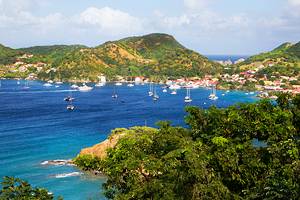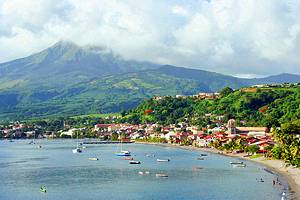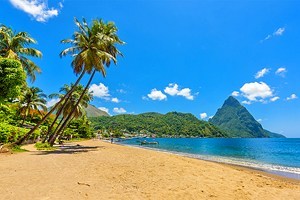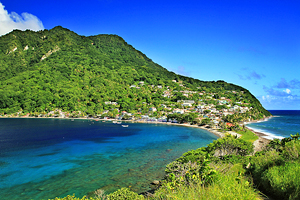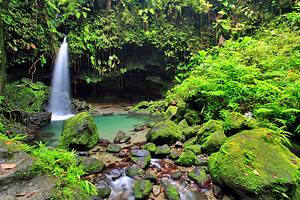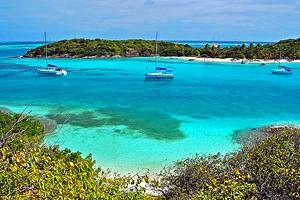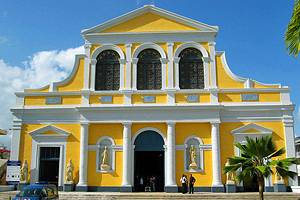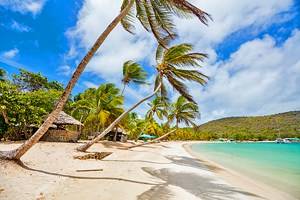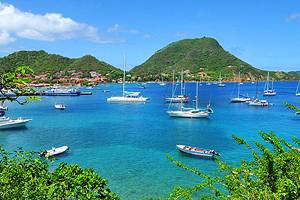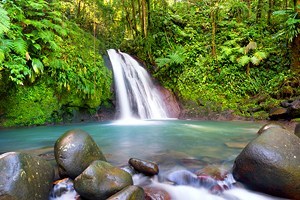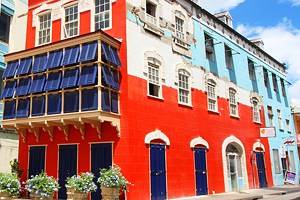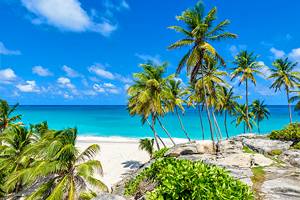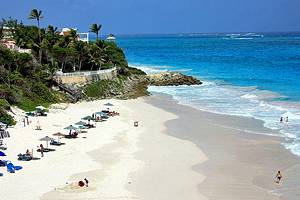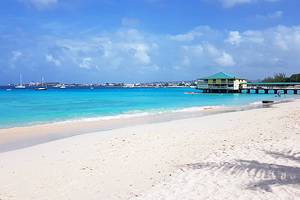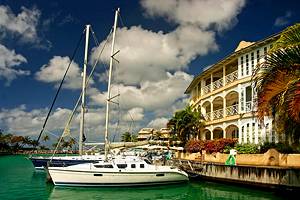Martinique in Pictures: Beautiful Places to Photograph
Martinique is a photographer's dream, with riveting mountains, gorgeous beaches, and a seaside city that rose from the ashes following an eruption from Mount Pelée. The former capital of Saint Pierre sits at the foothills of the soaring Mount Pelée on the golden shores of the Caribbean. With its fishing and sailing boats bobbing in the waves, it's perhaps the most photographed region of the island, with many opportunities for beautiful pictures.
On this French Caribbean island in the Lesser Antilles, visitors can fill up their memory cards with images from the bustling capital city of Fort de France, charming seaside towns, and their spectacular beaches. Besides taking photos, Martinique offers so many things to do, both in the sea and on land.
Here are some beautiful places in Martinique that are worth visiting for incredible pictures:
- Fort-de-France
- Pointe du Bout
- The Schoelcher Library
- Mount Pelée
- Saint Pierre
- Les Salines
- Le Morne-Rouge
- Anse d'Arlet
- Savanna of Petrifications
- Balata Botanical Garden
- Anse Noire (Black Bay)
- Sacre Coeur de Balata Church
- Tartane
- Dubuc Castle Ruins
- Diamond Rock
- La Savane des Esclaves
- Grand Anse d'Arlet
- Anse Céron
Fort-de-France

The current capital and main city, Fort-de-France is the launching point for many of the island's adventures. But within the city limits, you'll find architectural marvels to photograph, like the 17th-century Fort Royal (Fort Saint Louis), Cathédrale Saint-Louis, and the Palais de Justice. Visitors can learn about the city's pre-Columbian and colonial past in its museums.
Pointe du Bout
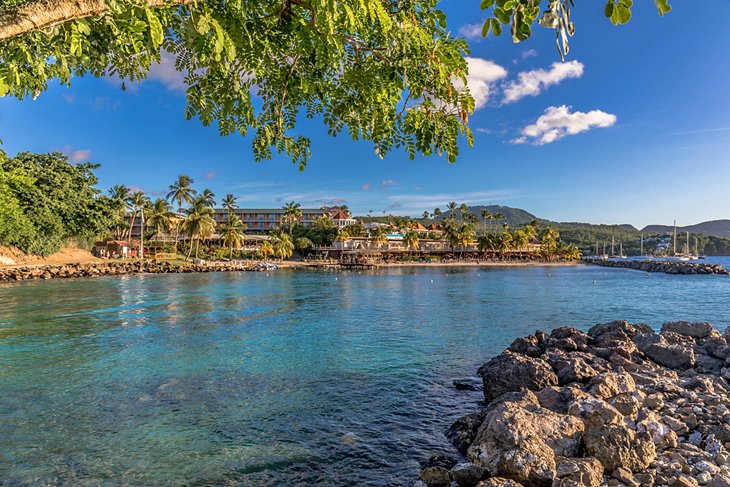
Across the bay from Fort de France on the southwestern coast of the island lies Pointe du Bout, the starting point for many boat trips and water sports. It is also the most developed resort area on the island, boasting some of the best resorts in Martinique; a large marina; several restaurants; sports facilities; and a Robert Trent Jones, Sr.-designed golf course in Les Trois-Ilets.
Some of the smaller hotels are located close to the lovely beaches of nearby Anse Mitan.
The Schoelcher Library

The Schoelcher library in Fort de France is of historical significance for having been erected in Paris and then rebuilt on Martinique in 1893. The magnificent building houses the book and musical collections of abolitionist Victor Schoelcher.
Mount Pelée

Mighty Mount Pelée erupted on May 8, 1902, destroying the city of Saint Pierre and taking many lives with it. Today, the volcano sits silent, cloaked by tropical vegetation. You can hike to the summit to take photos of the spectacular views of the ocean and the island of Dominica in the distance.
Saint Pierre

Saint Pierre, on the west coast of Martinique, sits in the shadow of Mount Pelée. Before the volcanic eruption destroyed it over a century ago, Saint Pierre was considered the Paris of the Caribbean for its wealth acquired from rum and sugarcane. Today, after being rebuilt, it provides a more relaxing alternative to Fort de France.
Les Salines

Les Salines is a classic Caribbean beach poster come to life, with a long stretch of creamy beach lined with curving palm trees and gentle waves lapping onto the shore. Named after the nearby salt pond, Les Salines, located a short distance from Sainte-Anne, the beach is considered one of the top attractions in Martinique and an ideal place to take photos.
Le Morne-Rouge

Situated near Mount Pelée, Le Morne-Rouge is a commune and the highest town in Martinique. It sits 450 meters above sea level and makes an ideal base for those venturing to reach the volcano's summit. The red roofs, green forest, and blue sky make for beautiful images.
Anse d'Arlet

As far as charming villages go, you can't go wrong with paying a visit to Anse d'Arlet on the southern coast of Martinique. Anse means cove, and Anse d'Arlet consists of villages named after their respective coves, like Anse Noire, Grande Anse, and Anse Dufour. These charming villages are connected by a coastal road presenting spectacular seaside views.
Savanna of Petrifications

At the tip of the peninsula south of Sainte Anne and next to the beach of Grande Anse des Salines, the striking semi-desert of Savane Des Pétrifications (Savanna of Petrifications) lures you to explore its natural beauty on hikes and capture images along the way. Stop by the Pointe d'enfer (Hell Headland) for breathtaking views of dramatic cliffs meeting the sea.
Balata Botanical Garden

Featuring more than 3,000 species of tropical plants, 300 different types of palm trees, and wooden rope suspension bridges connecting tree tops, the privately-owned Balata Botanical Garden is a magical man-made wonder worth visiting during your time in Martinique.
Capture scenic pictures of rolling hills adorned with flowers and, better yet, take some tropical flowers home with you for a fee.
Anse Noire (Black Bay)

Anse Noire, located between Trois Îlets and Anses d'Arlet, is the only black-sand beach on the island, and it can be accessed via a flight of stairs. Though it's not as popular as Les Salines, this beach is perfect for picnicking, snorkeling to see turtles, and photographing its scenic beauty.
Sacre Coeur de Balata Church

The Balata cathedral is a small size replica of Sacré-Coeur Basilica in Paris. Sitting on a hillside surrounded by a tropical forest just beyond the Balata Botanical Garden, the Sacre Coeur de Balata Church offers beautiful views of the city.
Tartane

Surf, sand, and incredible views make Tartane on the peninsula of Caravelle a sought-after destination in Martinique. This small fishing village boasts several family-friendly beaches, like Brèche beach, Anse Bonneville (for surfing), and Anse l'Etang.
Dubuc Castle Ruins

Also on the Caravelle Peninsula, another great spot for photographs is the Dubuc Castle. Once the home of the Dubuc de Rivery family in the 18th century, the castle, built by slavery, is set in the middle of a sugar plantation. Now, its remnants overlook the ocean, and you can walk among the still standing stone walls.
Diamond Rock

Jutting out of the water just off the southern coast of Martinique is the famous Diamond Rock. The basaltic rock is small, but it has an interesting history. During the Napoleonic Wars, it was used as a fortress, and soldiers and cannons were placed by the English. The French overtook the rock in a severe battle in 1805.
La Savane des Esclaves

Dedicated to chronicling the history of slavery in the Caribbean, La Savane des Esclaves offers a somber look into what life was like for slaves. Large structures, paintings, photographs, and art pieces bring the space here to life. Despite the dark history coming alive, the space has a serene energy surrounded by lush green hills and wildflowers.
Grand Anse d'Arlet

The Grand Anse d'Arlet beach (and the village that shares its name) sits cozily between rocky outcrops. This provides a quiet, secluded destination where you can take a break on the golden sands to photograph the sunset, hike up hills for open views over the bay, or jump on a boat to explore the surroundings.
Anse Céron

A beautiful beach with black volcanic sand set against a background of coconut palms, Anse Céron is still a well-kept secret. If you're looking for some solitude with stunning views over the blue sea, this is it. Bring your snorkeling equipment, as well as your camera -– the marine life here is worth exploring.


